Paul Bishop's Blog, page 13
December 15, 2018
A SLEUTH BY ANY OTHER NAME
 A SLEUTH BY ANY OTHER NAMESherlockian pastiches are a tricky business. Purists hate them. They will, however, grudgingly make room for Vincent Starrett’s The Private Life of Sherlock Holmes (1933). This is mostly due to Starrett’s status as one of the founders of The Hounds of the Baskerville, a Chicago chapter of The Baker Street Irregulars.
A SLEUTH BY ANY OTHER NAMESherlockian pastiches are a tricky business. Purists hate them. They will, however, grudgingly make room for Vincent Starrett’s The Private Life of Sherlock Holmes (1933). This is mostly due to Starrett’s status as one of the founders of The Hounds of the Baskerville, a Chicago chapter of The Baker Street Irregulars.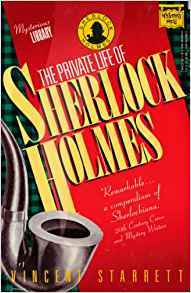 For non-fanatical Holmes fans, Sherlockian pastiches fall into three categories—total dreck, acceptably entertaining, and brilliant. The largest classification is, of course, total dreck. There is something about the pull of Sherlock Holmes which draws in every tin-eared hack with a limited knowledge of the canon, or enthusiastic, but limited, scribes who produce plodding prose barely a step up from fan-fiction.
For non-fanatical Holmes fans, Sherlockian pastiches fall into three categories—total dreck, acceptably entertaining, and brilliant. The largest classification is, of course, total dreck. There is something about the pull of Sherlock Holmes which draws in every tin-eared hack with a limited knowledge of the canon, or enthusiastic, but limited, scribes who produce plodding prose barely a step up from fan-fiction.Most readers agree with the selection of those pastiches labeled as total dreck. The term Brilliant, reserved for very few Sherlockian pastiches, meet with general consensus. The acceptably entertaining classification, however, rages with diametrically opposed opinions.
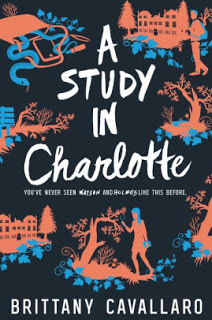 A quick glance at the reviews on Amazon or Goodreads reveals an outpouring of either venom or simpering ecstasy for those Sherlockian pastiches eligible to be called acceptably entertaining. I mention this as your mileage may vary with regards to any recommendation I may make regarding Sherlockian pastiches.
A quick glance at the reviews on Amazon or Goodreads reveals an outpouring of either venom or simpering ecstasy for those Sherlockian pastiches eligible to be called acceptably entertaining. I mention this as your mileage may vary with regards to any recommendation I may make regarding Sherlockian pastiches.Another problem for Holmesians crops up when a pastiche spawns a series in which the entries go from acceptably entertainingto total dreck from book to book. Earlier this year, I enjoyed the first two books in Brittany Cavallaro’s young adult series featuring Charlotte Holmes. However the third and fourth books in the series jumped the calabash.
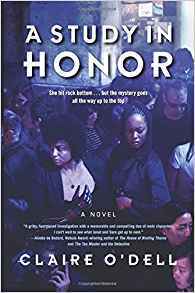 I have also recently read A Study In Honor by Claire O’Dell. I enjoyed its futuristic, feminist twist on the Holmes mythos (featuring Janet Watson and Sara Holmes), but feel it was a one-off gimmick without much promise for a sequel.
I have also recently read A Study In Honor by Claire O’Dell. I enjoyed its futuristic, feminist twist on the Holmes mythos (featuring Janet Watson and Sara Holmes), but feel it was a one-off gimmick without much promise for a sequel. Mark Gatiss and Stephen Moffat gave us two brilliant seasons of Benedict Cumberbatch and Martin Freeman playing Holmes and Watson. They then turned around and destroy the show in seasons three and four making it disappear up their own agenda driven sphincter.
For me Jonny Lee Miller and Lucy Liu can do no wrong on Elementary, and HBO Asia’s Miss Sherlock has found its own niche. Having made these claims, I can hear rustling in the bushes of discontent as many other Sherlock enthusiasts want desperately to disagree with me. To them I say, “Brrrrrth!"
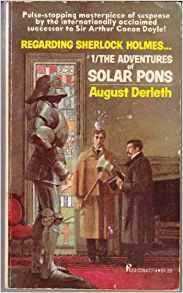 August Derleth’s Solar Pons stories can be found at the top of most Sherlockian’s brilliant classification. Essentially, Pons is a Holmes clone—a sleuth by any other name. Derleth wrote seventy stories featuring Pons. After his death in 1971, a further thirty-two Pons tales were transcribed by Basil Copper. Fourteen more stories were later scripted by David Marcum. All in all, Pons appeared in one hundred and eighteen stories, virtually double the appearances of the original Sherlock Holmes.
August Derleth’s Solar Pons stories can be found at the top of most Sherlockian’s brilliant classification. Essentially, Pons is a Holmes clone—a sleuth by any other name. Derleth wrote seventy stories featuring Pons. After his death in 1971, a further thirty-two Pons tales were transcribed by Basil Copper. Fourteen more stories were later scripted by David Marcum. All in all, Pons appeared in one hundred and eighteen stories, virtually double the appearances of the original Sherlock Holmes.Like Holmes, Pons has prodigious powers of observation and deduction. He can astound his companions by telling them minute details about people he has only just met. Where Holmes' stories are recounted by Dr. Watson, Pons’ tales are narrated by Dr. Lyndon Parker. Parker and Pons share lodgings at 7B Praed Street in London. Their landlady is not Mrs. Hudson, but Mrs. Johnson. Holmes’ elder brother, Mycroft, has an irritating greater intellect. Solar Pons’ brother, Bancroft, is of the same stock. You get the idea.
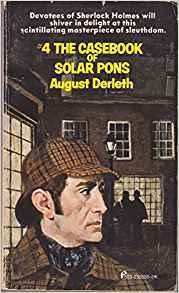 I point this out in preparation to discuss The Daughter of Sherlock Holmes series by Leonard Goldberg, which I personally place in the acceptably entertaining category. Goldberg is a bestselling author of medical thrillers, but here he turns his hand to historical mysteries with a cast of very recognizable characters.
I point this out in preparation to discuss The Daughter of Sherlock Holmes series by Leonard Goldberg, which I personally place in the acceptably entertaining category. Goldberg is a bestselling author of medical thrillers, but here he turns his hand to historical mysteries with a cast of very recognizable characters.Unlike Derleth, who simply renamed all the characters from the Sherlockian canon, Goldberg goes one step further, blatantly playing with the concept of inheritance. Utilizing the children of the original Holmes characters, Goldberg asks readers to accept these offspring would all go into the same professions or criminal malfeasance as their parents while having the same temperament and personality of older generation counterparts. Inspector Lestrade has much the same temperament and lack of acumen as his father; Mrs. Hudson’s daughter now keeps house at 221B; Sebastian Moran’s son, Christopher, has followed his father’s footsteps by becoming a doctor with the same dastardly criminal disposition; etc., etc.
This is definitely an impossible gobstopper to swallow for purists. It will even be rough going for many casual fans. Imagining lead character Joanna Blalock as the daughter of Sherlock Holmes and Irene Adler (given as a newborn to a good family after her mother's death in childbirth) takes even more leaps when it comes to the suspension of disbelief.
Since I have no problem believing six impossible things before breakfast, I am happy to accept Goldberg’s story conceit despite its illogicalities. My position is helped by Goldberg’s abilities as an engrossing storyteller, utilizing an uncluttered style, which is fast paced enough to zip past any potential glitches. His affection for the original characters and his knowledge of the Sherlockian canon also helps me want to go along on this literary journey.
 Goldberg quickly introduces Joanna to the original Dr. John Watson and his son Dr. John Watson, Jr. Joanna is a trained nurse, a widow, and mother to a ten year old male prodigy—who is the spitting image of his celebrated grandfather at the same age.
Goldberg quickly introduces Joanna to the original Dr. John Watson and his son Dr. John Watson, Jr. Joanna is a trained nurse, a widow, and mother to a ten year old male prodigy—who is the spitting image of his celebrated grandfather at the same age. Gifted with an incredible intellect from both of her biological parents, Joanna also has a quality her father lacked, but her mother had in spades—charm and sociability. She's undeniably a force to be reckoned with—equal parts Sherlock and Irene Adler, and with an interesting backstory of adoption, marriage, and motherhood.
Within a chapter or two, the trio become a formidable investigative team, using Joanna’s inherited deductive skills, and Watson’s medical knowledge, to unravel a murder at the highest levels of British society.
Perhaps I was simply in the mood for a touch of the Sherlock magic, but I found myself caught up in The Daughter of Sherlock Holmes. My infatuation continued with book two, A Study In Treason. I have book three, The Disappearance of Alistair Ainsworth, in my to be read pile, wondering if the third outing will also be a charm or if the agents of darkness will derail the series.
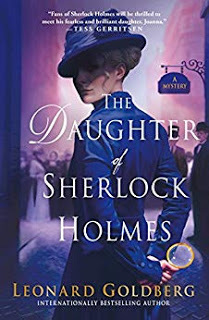 THE DAUGHTER OF SHERLOCK HOLMESA new thrilling tale of the great detective’s daughter and her companion Dr. John Watson, Jr. as they investigate a murder at the highest levels of British society...Joanna Blalock’s keen mind and incredible insight lead her to become a highly-skilled nurse, one of the few professions that allow her to use her finely-tuned brain. But when she and her ten-year-old son witness a man fall to his death, apparently by suicide, they are visited by the elderly Dr. John Watson and his charming, handsome son, Dr. John Watson Jr. Impressed by her forensic skills, they invite her to become the third member of their investigative team...Caught up in a Holmesian mystery that spans from hidden treasure to the Second Afghan War of 1878-1880, Joanna and her companions must devise an ingenious plan to catch a murderer in the act while dodging familiar culprits, Scotland Yard, and members of the British aristocracy. Unbeknownst to her, Joanna harbors a mystery of her own. The product of a one-time assignation between the now dead Sherlock Holmes and Irene Adler, the only woman to ever outwit the famous detective, Joanna has unwittingly inherited her parents’ deductive genius.
THE DAUGHTER OF SHERLOCK HOLMESA new thrilling tale of the great detective’s daughter and her companion Dr. John Watson, Jr. as they investigate a murder at the highest levels of British society...Joanna Blalock’s keen mind and incredible insight lead her to become a highly-skilled nurse, one of the few professions that allow her to use her finely-tuned brain. But when she and her ten-year-old son witness a man fall to his death, apparently by suicide, they are visited by the elderly Dr. John Watson and his charming, handsome son, Dr. John Watson Jr. Impressed by her forensic skills, they invite her to become the third member of their investigative team...Caught up in a Holmesian mystery that spans from hidden treasure to the Second Afghan War of 1878-1880, Joanna and her companions must devise an ingenious plan to catch a murderer in the act while dodging familiar culprits, Scotland Yard, and members of the British aristocracy. Unbeknownst to her, Joanna harbors a mystery of her own. The product of a one-time assignation between the now dead Sherlock Holmes and Irene Adler, the only woman to ever outwit the famous detective, Joanna has unwittingly inherited her parents’ deductive genius.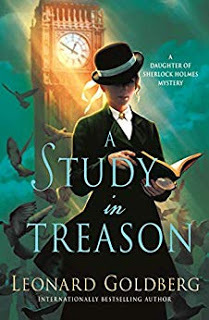 A STUDY IN TREASONA seemingly impossible mystery tests the keen mind and forensic skills of Joanna Blalock, the daughter of Sherlock Holmes and the heir to his unique talent for deduction...The following case has not previously been disclosed to the public due to the sensitive information on foreign affairs. All those involved were previously bound by the Official Secrets Act. With the passage of time and the onset of the Great War, these impediments have been removed and the story can now be safely told...When an executed original of a secret treaty between England and France, known as the French Treaty, is stolen from the country estate of Lord Halifax, Scotland Yard asks Joanna, Dr. John Watson, Jr., and Dr. John Watson, Sr. to use their detective skills to participate in the hunt for the missing treaty. As the government becomes more restless to find the missing document and traditional investigative means fail to turn up the culprit, Joanna is forced to devise a clever plan to trap the thief and recover the missing treaty.
A STUDY IN TREASONA seemingly impossible mystery tests the keen mind and forensic skills of Joanna Blalock, the daughter of Sherlock Holmes and the heir to his unique talent for deduction...The following case has not previously been disclosed to the public due to the sensitive information on foreign affairs. All those involved were previously bound by the Official Secrets Act. With the passage of time and the onset of the Great War, these impediments have been removed and the story can now be safely told...When an executed original of a secret treaty between England and France, known as the French Treaty, is stolen from the country estate of Lord Halifax, Scotland Yard asks Joanna, Dr. John Watson, Jr., and Dr. John Watson, Sr. to use their detective skills to participate in the hunt for the missing treaty. As the government becomes more restless to find the missing document and traditional investigative means fail to turn up the culprit, Joanna is forced to devise a clever plan to trap the thief and recover the missing treaty.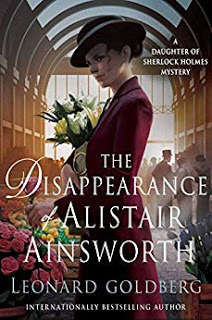 THE DISAPPEARANCE OF
ALISTAIR AINSWORTH
The daughter of Sherlock Holmes faces a new unsolvable mystery with spies and a threat to the crown. Joanna and the Watsons receive an unexpected visitor to 221b Baker Street during a nocturnal storm. A rain-drenched Dr. Alexander Verner arrives with a most harrowing tale...Verner has just returned from an unsettling trip to see a patient who he believes is being held against his will. Joanna quickly realizes that Verner's patient is a high-ranking Englishman who the Germans have taken captive to pry vital information about England’s military strategies for the Great War. The man is revealed to be Alistair Ainsworth, a cryptographer involved in the highest level of national security...The police are frantic to find Ainsworth before the Germans can use him to decode all of England’s undeciphered messages. Ainsworth must be found at all costs and Joanna and the Watsons might be the only ones who can connect the clues to find him.
THE DISAPPEARANCE OF
ALISTAIR AINSWORTH
The daughter of Sherlock Holmes faces a new unsolvable mystery with spies and a threat to the crown. Joanna and the Watsons receive an unexpected visitor to 221b Baker Street during a nocturnal storm. A rain-drenched Dr. Alexander Verner arrives with a most harrowing tale...Verner has just returned from an unsettling trip to see a patient who he believes is being held against his will. Joanna quickly realizes that Verner's patient is a high-ranking Englishman who the Germans have taken captive to pry vital information about England’s military strategies for the Great War. The man is revealed to be Alistair Ainsworth, a cryptographer involved in the highest level of national security...The police are frantic to find Ainsworth before the Germans can use him to decode all of England’s undeciphered messages. Ainsworth must be found at all costs and Joanna and the Watsons might be the only ones who can connect the clues to find him.
Published on December 15, 2018 09:58
December 1, 2018
THE MARK OF CAIN PART 2
 THE MARK OF CAIN
THE MARK OF CAIN PART 2Never underestimate the reach of a personal blog. The blog posts I write are purely for my own entertainment. I enjoy doing it. Occasionally, others with the same types of niche interests will comment, but mostly I’m posting into the dark void of the Internet, with no expectations of being read.
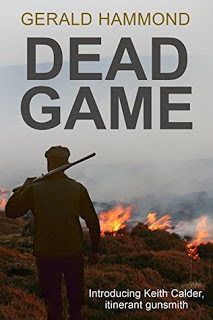 Occasionally, however, I get a pleasant surprise. When my prolific writer friend Gerald Hammond (best known for his Keith Calder gunsmith and hunting dogs mysteries) passed away, I was moved to write an appreciation of his work and our friendship—which went back to the days of written letters and international postage since Gerald lived in Scotland.
Occasionally, however, I get a pleasant surprise. When my prolific writer friend Gerald Hammond (best known for his Keith Calder gunsmith and hunting dogs mysteries) passed away, I was moved to write an appreciation of his work and our friendship—which went back to the days of written letters and international postage since Gerald lived in Scotland. Two years after I posted the article, I received an email from a young woman living in Australia. Gerald Hammond was her grandfather. She knew virtually nothing about him as she had immigrated to Australia with her parents when she was a small child. Consequently, she never had the opportunity to interact with him. Somehow, she came across my post with my profile of Gerald and why he was special to me. Reading it, she told me, brought her to tears. She had known virtually nothing about her grandfather, but now felt she had a renewed and strong connection to him.
Wow…That blog post certainly turned out to be worth writing.
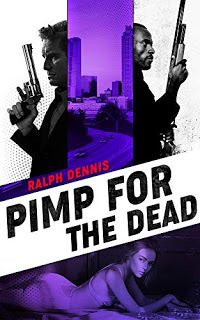 A few years ago, I wrote about the Hardman private eye series written by Ralph Dennis. The series was a hidden gem, which all but the most hardcore hardboiled mystery fans had forgotten. My good friend Lee Goldberg (a terrific writer in his own right and big mystery genre fan) had never heard of the series before.
A few years ago, I wrote about the Hardman private eye series written by Ralph Dennis. The series was a hidden gem, which all but the most hardcore hardboiled mystery fans had forgotten. My good friend Lee Goldberg (a terrific writer in his own right and big mystery genre fan) had never heard of the series before. 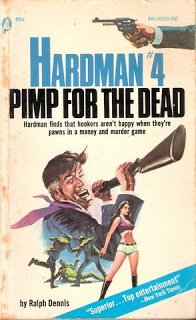 However, after reading my blog post extolling the virtues of the series, he decided to give the books a try. Lee loved them so much, he was inspired to start a whole publishing company in order to pursue the rights to the Hardman books and eventually republish them. His efforts resulted in the founding of Brash Books, who will be publishing the entire Hardman series starting this month.
However, after reading my blog post extolling the virtues of the series, he decided to give the books a try. Lee loved them so much, he was inspired to start a whole publishing company in order to pursue the rights to the Hardman books and eventually republish them. His efforts resulted in the founding of Brash Books, who will be publishing the entire Hardman series starting this month.Just another personal blog post working unexpected magic.
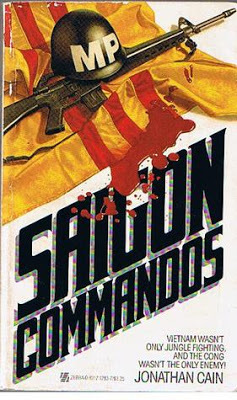 Recently, I wrote a fairly extensive post (
CLICK HERE
) about the twelve book men’s adventure paperback original series Saigon Commandos, and the series author Jonathan Cain (aka: Nicholas Cain).
Recently, I wrote a fairly extensive post (
CLICK HERE
) about the twelve book men’s adventure paperback original series Saigon Commandos, and the series author Jonathan Cain (aka: Nicholas Cain). I included a lot of information on the twenty other books Cain wrote for various series under various pseudonyms. To round out the article, I tracked down as much information as I could about Cain. This was difficult since he had a minimal virtual footprint with some obviously conflicting information.
I even had trouble finding a photo of Cain, but eventually lifted one from an obscure article detailing Cain’s personal book collecting habits.
Interestingly, my research revealed Cain and I had a number of personal intersections, including some law enforcement connections and a shared editor.
I threw all of this good stuff into the article, which I figured was probably only of interest to me. However, I did share the article with members of the Men’s Adventure Paperbacks of the 70s & 80s group on Facebook—the only other individuals who might care enough about the subject to indulge me. The article was well received and generated a certain amount of comments and praise for the well remembered Saigon Commandos series. I was gratified by the response, but figured (as usual) that would be the end of any minimal impact the article might have.
I was wrong. A week later I received an email from Cain himself, who had somehow found and read the post I wrote about him.
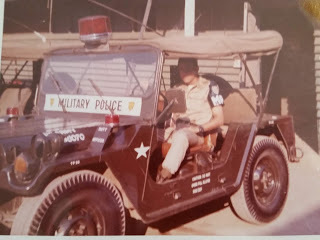 Paul…Your recent article earlier this month, (Mark of Cain), was a wonderful compilation of my efforts as a paperback writer back in the 80's. I didn't think anyone cared, after all these years, and it actually brought a tear to my eye recalling all those words typed (and the 31 years I spent in the City of Angels before "retiring" to Red Rock Country). And thank you for your service to the LAPD—an agency that has always held a soft spot in my heart...Nicholas Cain
Paul…Your recent article earlier this month, (Mark of Cain), was a wonderful compilation of my efforts as a paperback writer back in the 80's. I didn't think anyone cared, after all these years, and it actually brought a tear to my eye recalling all those words typed (and the 31 years I spent in the City of Angels before "retiring" to Red Rock Country). And thank you for your service to the LAPD—an agency that has always held a soft spot in my heart...Nicholas Cain
Well, that was pretty cool. I wrote back, and we found we shared more common ground than either of us expected. Since then we have exchanged a number of emails, excerpts of which I’ve included below with Nick’s permission...
The attached publicity photo is quite old—I used it while seeking new writing gigs back in the mid-80's, trying to sell a couple series concepts that never went anywhere—even three screenplays my agent at the time was unable to sell. It was because they were too heavily Vietnam-themed, I believe was her reasoning at the time…
Personally, I think the publicity shot (featured at the top of this post) is major cool with its quintessential ‘80s vibe…
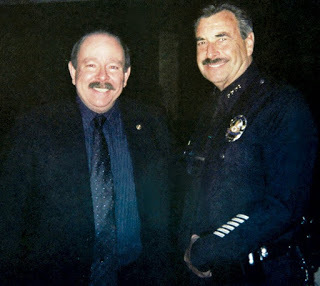 I'm attaching a slightly more recent photo: one where I am posing with Charlie Beck the day after he was sworn in as LAPD's new Top Cop on December 7, 2009—wow, that's over nine years ago, yet seems like...okay, it does seem like nine years ago…
I'm attaching a slightly more recent photo: one where I am posing with Charlie Beck the day after he was sworn in as LAPD's new Top Cop on December 7, 2009—wow, that's over nine years ago, yet seems like...okay, it does seem like nine years ago…
Charley Beck was my police academy classmate and has been a long time friend. Because of alphabetical organization, Charlie and I appear next to each other in every photo of us going through the rigors of recruit training...
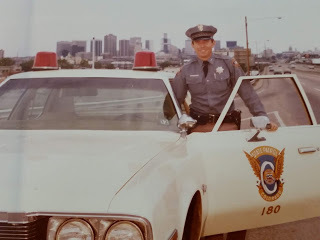 I just spent the last few hours perusing the Men's Adventure Paperbacks Facebook page—incredible! I had no idea there was such a fantastic group of fellow writers and fans. It blows my mind that copies of Saigon Commandos #1 are selling for upwards of $100 on eBay! I have no idea who would pay that amount—it would definitely have to be a "die-hard" fan, I suppose...
I just spent the last few hours perusing the Men's Adventure Paperbacks Facebook page—incredible! I had no idea there was such a fantastic group of fellow writers and fans. It blows my mind that copies of Saigon Commandos #1 are selling for upwards of $100 on eBay! I have no idea who would pay that amount—it would definitely have to be a "die-hard" fan, I suppose...
Always nice to realize there is still interest in the work we have done…
Lynx Books, which was publishing my Little Saigon series, went bankrupt after #4 came out. I've been thinking about self-publishing a signed, limited edition, (perhaps 1,000 hardcovers) combining Books #5 and 6 into one volume. The original manuscripts were delivered to Lynx. They were paid for, but never published. I've tried to contact Jeffrey Weiss (the publisher at the time) to sort out the legal/copyright issues, but without success, so the project has somewhat stalled. However, I would really like to see the books released before I'm planted six feet under…
I have, of course, encouraged him to keep pursuing getting the last two books in the series into print…
I wanted to (apologize and) let you know that I absolutely CRINGED when I saw the cover artwork for the "Little Saigon" books. The editor asked me for suggestions, and I went so far as to send them one of the hard-to-get (at that time) Motor Officer patches with the Red Cross in the center, but they thought that was "too boring," and came up with the ridiculous yellow patch they ended up using despite my repeated protests
Battles over covers, titles, and opening lines have been fought (and often lost) by most of us who play in the writing sandbox at one time or another…
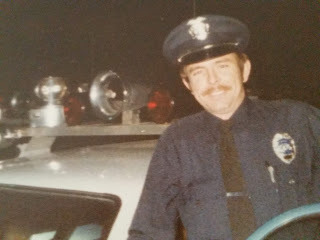 After I started ghostwriting some of the Able Team books for [editor] Feroze Mohammed over at Gold Eagle, I began losing my motivation—especially since I was unable to break into the mainstream of hardcovers and couldn't sell my screenplays to Hollyweird. At the time, I missed working the street, so went back on the beat, but as a private investigator in California around 1989. I was sending fraud referrals to the Dept. of Insurance and was eventually talked into coming on board as a state investigator. I worked there and a couple other state agencies for the next 14 years, eventually making Deputy Commissioner at the D.R.E.'s Enforcement Division.
After I started ghostwriting some of the Able Team books for [editor] Feroze Mohammed over at Gold Eagle, I began losing my motivation—especially since I was unable to break into the mainstream of hardcovers and couldn't sell my screenplays to Hollyweird. At the time, I missed working the street, so went back on the beat, but as a private investigator in California around 1989. I was sending fraud referrals to the Dept. of Insurance and was eventually talked into coming on board as a state investigator. I worked there and a couple other state agencies for the next 14 years, eventually making Deputy Commissioner at the D.R.E.'s Enforcement Division.
After being assigned to the L.A. District Attorney's Real Estate Fraud Task Force, (circa 2006-2014), I found myself working many late nights at the Cal-BRE Squad Room in downtown Los Angeles at 4th & Broadway—even exchanging a couple midnight e-mails with Charlie Beck after he made Chief. For an old Saigon Commando, that was quite a treat. I know some street coppers don't care much for him, but Charlie will always be one of my heroes.
I've always enjoyed reading about how author Will Murray resurrected the Doc Savage series, spent time with Lester Dent's archives, and spent thousands of hours researching the Man of Bronze." I’ve always harbored this secret hope that someday—albeit probably after I was long dead and buried—some dedicated archivist would target Saigon Commandos or War Dogs or Little Saigon in much the same way. It almost feels as if, with your article, you somehow managed to keep the memory of my old, pulp paperbacks alive—and for that, I thank you from the bottom of my heart...
Was my blog post on Saigon Commandosworth writing? Do I really need to ask? There should be no doubt, as it has led to a new friendship (you can never have and a lost member of our tribe returning to the fold…
Published on December 01, 2018 13:37
November 10, 2018
THE WORDSLINGER TRAILS—RALPH COMPTON
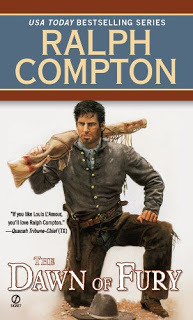
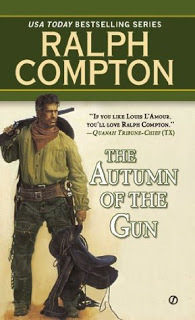 THE WORDSLINGER TRAILS
RIDING TALL
RALPH COMPTON
(April 11, 1934 – September 16, 1998)
Not many writers stand six-foot-eight-inches tall without their boots. Neither have many written twenty-three books in eight years, with several selling over a million copies and hitting the USA TodayBest-Seller List. The only wordslinger to hit the mark in both classifications is Western reader’s favorite, Ralph Compton.
THE WORDSLINGER TRAILS
RIDING TALL
RALPH COMPTON
(April 11, 1934 – September 16, 1998)
Not many writers stand six-foot-eight-inches tall without their boots. Neither have many written twenty-three books in eight years, with several selling over a million copies and hitting the USA TodayBest-Seller List. The only wordslinger to hit the mark in both classifications is Western reader’s favorite, Ralph Compton.
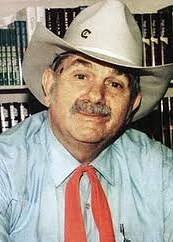 Wearing his boots and his cowboy hat, the late Compton’s wiry frame rose head and shoulders above the crowd whenever he went. His most amazing accomplishment, however, was not growing tall, but his prolific telling of Western tall tales. At fifty-six-years-old, having little prior writing experience, he sat down and began the opening chapter of his first his first Western—The Goodnight Trail. In the next eight years, he wrote twenty-two more Westerns before cancer took him home at age sixty-four. His canon of work became so popular, his publisher (Signet) used his legacy to build the Ralph Compton Brand. There have since been eight-two Westerns—authored by some of the best writers in the genre—published under the Ralph Comptonbanner.
Wearing his boots and his cowboy hat, the late Compton’s wiry frame rose head and shoulders above the crowd whenever he went. His most amazing accomplishment, however, was not growing tall, but his prolific telling of Western tall tales. At fifty-six-years-old, having little prior writing experience, he sat down and began the opening chapter of his first his first Western—The Goodnight Trail. In the next eight years, he wrote twenty-two more Westerns before cancer took him home at age sixty-four. His canon of work became so popular, his publisher (Signet) used his legacy to build the Ralph Compton Brand. There have since been eight-two Westerns—authored by some of the best writers in the genre—published under the Ralph Comptonbanner.
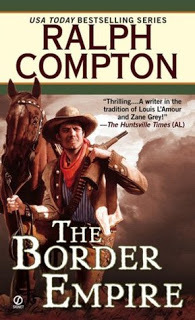 On US 411, near Odenville, Alabama, drivers pass a sign claiming Home of Ralph Compton. It denotes the beginning of a six mile trek through the woods to the log cabin with the dirt floor where Compton was born. In his autobiography, Compton stated, “You walked three miles along the Seaboard Railroad track, climbed a cut bank and trudged another three miles through the woods.” Born in 1937, at the tail end of the Depression, Compton’s family struggled with the harsh realities of poverty, “It seemed like we all started poor and went downhill from there.”His mother had a sixth grade education; his father, fifth grade. “By the time FDR’s ‘team of mules, seed and fertilizer’ stake got to us, there were no mules.” His father settled for oxen instead of mules, along with seed and fertilizer. Inexperienced at best when it came to planting a crop, Compton said of his father, “In his best year, he made almost enough to repay what he owed the government.”Compton graduated from St. Clair County High School in Odenville—a major accomplishment for a young boy in worn out clothes and rarely a full meal. Compton states, “In those days, welfare families were not looked on with favor. There were four of us, and we received the staggering sum of thirty-nine dollars a month. I owe my high school graduation to understanding teachers who provided odd jobs so I had the bare necessities.”
On US 411, near Odenville, Alabama, drivers pass a sign claiming Home of Ralph Compton. It denotes the beginning of a six mile trek through the woods to the log cabin with the dirt floor where Compton was born. In his autobiography, Compton stated, “You walked three miles along the Seaboard Railroad track, climbed a cut bank and trudged another three miles through the woods.” Born in 1937, at the tail end of the Depression, Compton’s family struggled with the harsh realities of poverty, “It seemed like we all started poor and went downhill from there.”His mother had a sixth grade education; his father, fifth grade. “By the time FDR’s ‘team of mules, seed and fertilizer’ stake got to us, there were no mules.” His father settled for oxen instead of mules, along with seed and fertilizer. Inexperienced at best when it came to planting a crop, Compton said of his father, “In his best year, he made almost enough to repay what he owed the government.”Compton graduated from St. Clair County High School in Odenville—a major accomplishment for a young boy in worn out clothes and rarely a full meal. Compton states, “In those days, welfare families were not looked on with favor. There were four of us, and we received the staggering sum of thirty-nine dollars a month. I owe my high school graduation to understanding teachers who provided odd jobs so I had the bare necessities.”
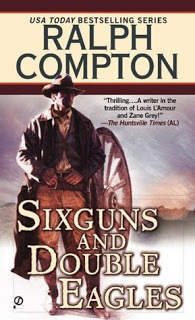 He points to his high school principal, Nancy Wilson (to whom he dedicated his first Western, The Goodnight Trail), for his love of reading and his ability to read with comprehension and retention. “Because I did read, she moved me ahead, encouraging me to read literature and history more advanced than my grade required. Before my graduation, I knew I wanted to write, although I wasn’t sure what."Compton served in the Army during the Korean War. When he returned home, he was still unsure of his career direction. He joined forces with his brother, Bill, a skilled guitarist with a good voice. They formed a bluegrass group, and set out to play the local circuit of legion halls, armories, and schools. They played live on local radio stations, often racing from station to station to reach the widest audience possible. Compton recalled, “Most little stations provided time for free on Saturday afternoon, usually fifteen to thirty minutes for those enthusiastic enough—or dumb enough—to donate their talent for the exposure.” In 1960, Bill moved on to play with Country Boy Eddie (Gordon Edwards Burns), a singer, fiddler and guitarist who hosted the long-running Country Boy Eddie Show on Alabama’s WBRC-TV station.
He points to his high school principal, Nancy Wilson (to whom he dedicated his first Western, The Goodnight Trail), for his love of reading and his ability to read with comprehension and retention. “Because I did read, she moved me ahead, encouraging me to read literature and history more advanced than my grade required. Before my graduation, I knew I wanted to write, although I wasn’t sure what."Compton served in the Army during the Korean War. When he returned home, he was still unsure of his career direction. He joined forces with his brother, Bill, a skilled guitarist with a good voice. They formed a bluegrass group, and set out to play the local circuit of legion halls, armories, and schools. They played live on local radio stations, often racing from station to station to reach the widest audience possible. Compton recalled, “Most little stations provided time for free on Saturday afternoon, usually fifteen to thirty minutes for those enthusiastic enough—or dumb enough—to donate their talent for the exposure.” In 1960, Bill moved on to play with Country Boy Eddie (Gordon Edwards Burns), a singer, fiddler and guitarist who hosted the long-running Country Boy Eddie Show on Alabama’s WBRC-TV station.
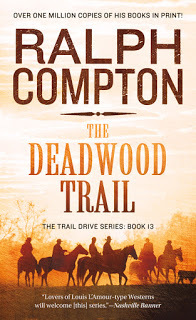 Ralph traveled to Nashville where he struggled as a songwriter. He co-founded The Rhinestone Rooster, a tabloid magazine, but quickly went broke. He borrowed money to keep the magazine afloat, but quickly went broke again. Not willing to give up, he turned The Rhinestone Rooster into a record label, but still did not find enough success to make the venture worthwhile.Jobs as a radio announcer, a newspaper columnist, and other odd jobs followed. In the summer of 1988 (“When I was pretty well fed up with the music business...”), the then fifty-four-year-old Compton began writing a novel. He wrote what he knew, “...a Southern novel, a hard times tale of growing up during the depression.”Bob Robertson, a literary agent who read the manuscript, felt Compton’s writing showed promise. He didn’t, however, believe he could sell the novel to a publisher as the market was saturated with similar coming of age tales. Robertson was impressed enough with Compton’s writing to ask him a straightforward question...”Can you write a western?” Compton’s reply would ultimately change his life...“I don’t know. I like Westerns, but I’ve never written one. Let me try.”
Ralph traveled to Nashville where he struggled as a songwriter. He co-founded The Rhinestone Rooster, a tabloid magazine, but quickly went broke. He borrowed money to keep the magazine afloat, but quickly went broke again. Not willing to give up, he turned The Rhinestone Rooster into a record label, but still did not find enough success to make the venture worthwhile.Jobs as a radio announcer, a newspaper columnist, and other odd jobs followed. In the summer of 1988 (“When I was pretty well fed up with the music business...”), the then fifty-four-year-old Compton began writing a novel. He wrote what he knew, “...a Southern novel, a hard times tale of growing up during the depression.”Bob Robertson, a literary agent who read the manuscript, felt Compton’s writing showed promise. He didn’t, however, believe he could sell the novel to a publisher as the market was saturated with similar coming of age tales. Robertson was impressed enough with Compton’s writing to ask him a straightforward question...”Can you write a western?” Compton’s reply would ultimately change his life...“I don’t know. I like Westerns, but I’ve never written one. Let me try.”
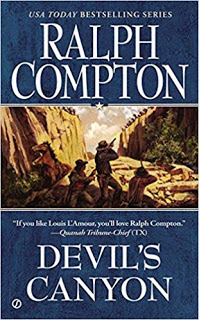 Writing feverishly in every spare moment around his forty-hour a week nighttime work schedule, he completed a shoot-‘em-up 185 page manuscript. However, when he showed it to Robertson, the agent told him it was good, but had nothing to distinguish it from hundreds of other Westerns. The agent then offered more sage advice, “Write the kind of Western you like. And plan on writing at least three books, a minimum of three-hundred and fifty pages each.” This seemed overwhelming to Compton, who felt he’d already done the best he could. But Robertson continued to encourage him. The agent wanted a potential series, something with a hook that had not been done before.Over the next several weeks Compton and Robertson kicked around ideas. They wanted a concept to embody all the exciting aspects of the Western, yet be unique in its presentation. From their collaboration, the concept of the Trail Drive series was created.
Writing feverishly in every spare moment around his forty-hour a week nighttime work schedule, he completed a shoot-‘em-up 185 page manuscript. However, when he showed it to Robertson, the agent told him it was good, but had nothing to distinguish it from hundreds of other Westerns. The agent then offered more sage advice, “Write the kind of Western you like. And plan on writing at least three books, a minimum of three-hundred and fifty pages each.” This seemed overwhelming to Compton, who felt he’d already done the best he could. But Robertson continued to encourage him. The agent wanted a potential series, something with a hook that had not been done before.Over the next several weeks Compton and Robertson kicked around ideas. They wanted a concept to embody all the exciting aspects of the Western, yet be unique in its presentation. From their collaboration, the concept of the Trail Drive series was created.
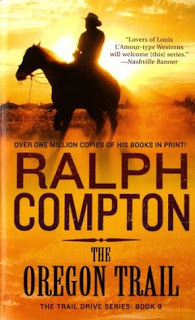 In January of 1990, after much sweat and research, Compton presented Robertson with a detailed synopsis of the first three books in the series—The Goodnight Trail, The Western Trail, and The Chisholm Trail. Robertson enthusiastically approved. Eight months later, Compton finished writing The Goodnight Trail, a rip-roaring western about the cattle drive which established a new route from Texas to Colorado.Compton skillfully mixed fact with fiction as told the tale former Texas Rangers Benton McCaleb, Will Elliot, and Brazos Gifford to ride the trail alongside the real life Charles Goodnight. Compton’s characters were fresh and alive, jumping off the page with the historical background accuracy that would become his trademark. The rights to The Goodnight Trail sold quickly, establishing a profitable long-term relationship with publishers St. Martin’s Press and Signet. It sold more than 1 million copies and was chosen by the Western Writers of America as a finalist for their Medicine Pipe Bearer Award—given to the best debut Western of the year.
In January of 1990, after much sweat and research, Compton presented Robertson with a detailed synopsis of the first three books in the series—The Goodnight Trail, The Western Trail, and The Chisholm Trail. Robertson enthusiastically approved. Eight months later, Compton finished writing The Goodnight Trail, a rip-roaring western about the cattle drive which established a new route from Texas to Colorado.Compton skillfully mixed fact with fiction as told the tale former Texas Rangers Benton McCaleb, Will Elliot, and Brazos Gifford to ride the trail alongside the real life Charles Goodnight. Compton’s characters were fresh and alive, jumping off the page with the historical background accuracy that would become his trademark. The rights to The Goodnight Trail sold quickly, establishing a profitable long-term relationship with publishers St. Martin’s Press and Signet. It sold more than 1 million copies and was chosen by the Western Writers of America as a finalist for their Medicine Pipe Bearer Award—given to the best debut Western of the year.
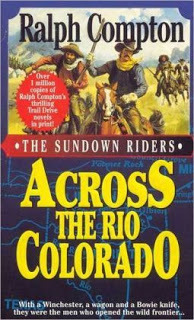 Compton had read many of the great Western writers. While believing he had developed his own style, he claimed, “I shamelessly adopted one element, which I admired most in the work of Louis L’Amour. While there was romance in his books, there was no graphic, shocking sex.”Of his writing, Compton also explained, “I depend solely on three elements: (1) a powerful sense of time and place, (2) a strong, fast-paced story, with interesting sub-plots, and (3) powerful, memorable characters.” His inspiration for the strong characters and style of storytelling he brought to his own work was the television series Gunsmoke.In a 1993 issue of The Roundup, a publication of the Western Writers of America, Compton returned to the question that started it all...“Can you write a western? I could, and thank God, I did. My one regret is I lacked the confidence and courage to do it sooner.”Ten more Westerns in the Trail Seriesfollowed. Books in the Sundown Riderseries and the Border Empire series, along with a dozen other Westerns added to his prolific, fast paced output. Like a man knowing he is running out of time, Compton authored more than two dozen novels during the last decade of his life. Six Guns and Double Eagles, The California Trail, and The Shawnee Trail were all bestsellers in 1997.
Compton had read many of the great Western writers. While believing he had developed his own style, he claimed, “I shamelessly adopted one element, which I admired most in the work of Louis L’Amour. While there was romance in his books, there was no graphic, shocking sex.”Of his writing, Compton also explained, “I depend solely on three elements: (1) a powerful sense of time and place, (2) a strong, fast-paced story, with interesting sub-plots, and (3) powerful, memorable characters.” His inspiration for the strong characters and style of storytelling he brought to his own work was the television series Gunsmoke.In a 1993 issue of The Roundup, a publication of the Western Writers of America, Compton returned to the question that started it all...“Can you write a western? I could, and thank God, I did. My one regret is I lacked the confidence and courage to do it sooner.”Ten more Westerns in the Trail Seriesfollowed. Books in the Sundown Riderseries and the Border Empire series, along with a dozen other Westerns added to his prolific, fast paced output. Like a man knowing he is running out of time, Compton authored more than two dozen novels during the last decade of his life. Six Guns and Double Eagles, The California Trail, and The Shawnee Trail were all bestsellers in 1997.
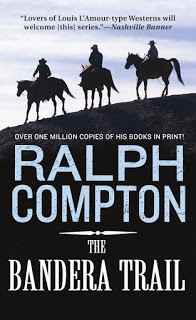 Compton passed away from cancer in Nashville, Tennessee at age sixty-four. His journey from dirt floor beginnings to bestselling author is one of hope and perseverance, as inspiring as any of his Westerns. In his own words, “While the Old West lives only in the pages of history, I believe there’s something within each of us that longs for those days when there was yet another frontier to be conquered, another mountain to cross, and the thrill of the unknown. I believe the Old West will live forever—perhaps not in Hollywood, but in the hearts and minds of men and women who refuse to let it die.”
*In researching Compton I repeatedly found a reference to a 1973 novel,
Festival of Spies, listed as part of his writing resume. Copies of Festival of Spies are so exceedingly scarce, I’ve yet to turn up a single copy to verify if it was indeed written by Compton, or is the work of another author of the same name—the resolution toward which I am leaning.Often times the Internet becomes so incestuous as one source cannibalizes another, perpetuating myths and mistakes. If anyone has a copy of Festival of Spies, or knows the story behind the title, please let me know.*
Compton passed away from cancer in Nashville, Tennessee at age sixty-four. His journey from dirt floor beginnings to bestselling author is one of hope and perseverance, as inspiring as any of his Westerns. In his own words, “While the Old West lives only in the pages of history, I believe there’s something within each of us that longs for those days when there was yet another frontier to be conquered, another mountain to cross, and the thrill of the unknown. I believe the Old West will live forever—perhaps not in Hollywood, but in the hearts and minds of men and women who refuse to let it die.”
*In researching Compton I repeatedly found a reference to a 1973 novel,
Festival of Spies, listed as part of his writing resume. Copies of Festival of Spies are so exceedingly scarce, I’ve yet to turn up a single copy to verify if it was indeed written by Compton, or is the work of another author of the same name—the resolution toward which I am leaning.Often times the Internet becomes so incestuous as one source cannibalizes another, perpetuating myths and mistakes. If anyone has a copy of Festival of Spies, or knows the story behind the title, please let me know.*
Published on November 10, 2018 14:02
THE MARK OF CAIN
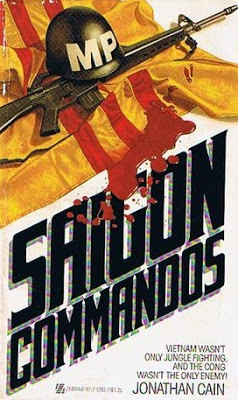
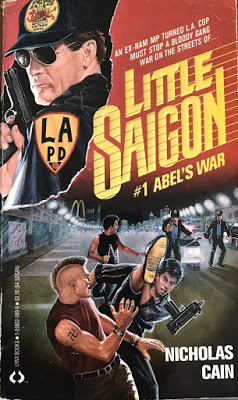
THE MARK OF CAIN
In a recent used bookstore foray, I picked up a copy of War Dogs #4 Body Count, an entry in a 1984 men’s adventure paperback original series set during the Vietnam war. Having been a collector of men’s adventure genre novels since my late teens, I was surprised to find myself unfamiliar with both the series and the author Nik Uhernik.
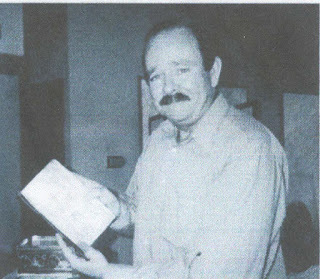 Back home some quick Internet research revealed Uhernik as a pseudonym for prolific men’s adventure writer Nicholas Cain. His first, and best remembered, series was the cult favorite Saigon Commandos,written under the pseudonym Jonathan Cain in the mid-80. The series ran for 12 titles all published by Zebra Books. One critic referred to the Saigon Commandos series as the Hill Street Blues of Vietnam.
Back home some quick Internet research revealed Uhernik as a pseudonym for prolific men’s adventure writer Nicholas Cain. His first, and best remembered, series was the cult favorite Saigon Commandos,written under the pseudonym Jonathan Cain in the mid-80. The series ran for 12 titles all published by Zebra Books. One critic referred to the Saigon Commandos series as the Hill Street Blues of Vietnam.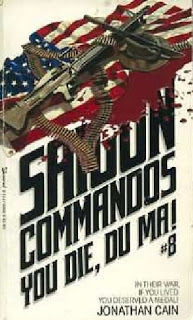 *Saigon Commandos is a derogatory term invented by infantrymen during the Vietnam War as a reference to any soldier not on the front lines. However, the military policemen in Saigon, who found themselves up against snipers, rowdy sappers, and other hostile local criminals across the Saigon underworld, wore the title as a badge of honor—proud to be lawmen patrolling what they considered the toughest beat in the world.*
*Saigon Commandos is a derogatory term invented by infantrymen during the Vietnam War as a reference to any soldier not on the front lines. However, the military policemen in Saigon, who found themselves up against snipers, rowdy sappers, and other hostile local criminals across the Saigon underworld, wore the title as a badge of honor—proud to be lawmen patrolling what they considered the toughest beat in the world.*
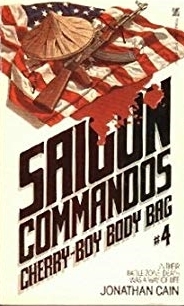 Cain used various other pseudonyms for a number of other paperback original men’s adventure series. These included the first 8 books in the Chopper—1 series as Jack Hawkins (a house name owned by Ivy Books); 3 books in Gold Eagle’s long-running Able Team series as Dick Stivers (a house name shared by many Gold Eagle authors); and 4 books in the War Dogs series (which prompted my line of research) as Nik Uhernik.I
Cain used various other pseudonyms for a number of other paperback original men’s adventure series. These included the first 8 books in the Chopper—1 series as Jack Hawkins (a house name owned by Ivy Books); 3 books in Gold Eagle’s long-running Able Team series as Dick Stivers (a house name shared by many Gold Eagle authors); and 4 books in the War Dogs series (which prompted my line of research) as Nik Uhernik.I*One of Cain’s Saigon Commando characters is Private Nick Uhernik, the son of a diplomat who was born and raised in Saigon, and is very possibly the genesis for Cain’s Nik Uhernik pseudonym.*
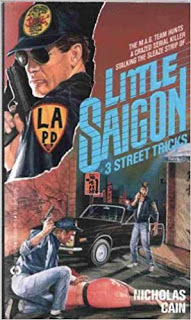 There were 6 books in Cain's urban cop series, Little Saigon published under his own name, Nicholas Cain. The series focused on serious crimes perpetuated in the biggest community of Vietnamese immigrants in America. Located in the Orange County area of Southern California, Little Saigon was once a quiet Los Angeles suburb dedicated to prosperity and hard work. However, over the years it became a war zone. Asian crime lords terrorized legitimate businessman with threats of murder and extortion. Youth gangs in hot cars with Uzis patrol the Bolsa Strip dealing death and destruction in bloody turf disputes. Outgunned and outnumbered, regular cops are overwhelmed. Enter police Lieutenant Luke Abel, a former MP from Old Saigon’s war torn streets. He knows the culture, the language, and the people. He also knows how to take the fight to the Vietnam-style guerilla crime gangs and win.
There were 6 books in Cain's urban cop series, Little Saigon published under his own name, Nicholas Cain. The series focused on serious crimes perpetuated in the biggest community of Vietnamese immigrants in America. Located in the Orange County area of Southern California, Little Saigon was once a quiet Los Angeles suburb dedicated to prosperity and hard work. However, over the years it became a war zone. Asian crime lords terrorized legitimate businessman with threats of murder and extortion. Youth gangs in hot cars with Uzis patrol the Bolsa Strip dealing death and destruction in bloody turf disputes. Outgunned and outnumbered, regular cops are overwhelmed. Enter police Lieutenant Luke Abel, a former MP from Old Saigon’s war torn streets. He knows the culture, the language, and the people. He also knows how to take the fight to the Vietnam-style guerilla crime gangs and win.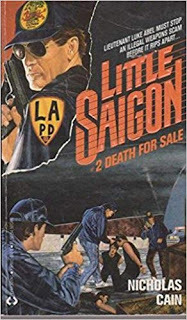 *Assigned to LAPD’s Anti-Terrorist Division for two years, I was assigned to a federal anti-terrorist task force. I spent a lot of time in Little Saigon on an investigation into a Vietnamese organized crime family terrorizing the community. The high ranking members all had ties to Operation Phoenix, a CIA operation in Vietnam that trained South Vietnamese special forces fighters to become assassins. They would then send them up-river alone with instructions to return with as many sets of North Vietnamese ears as they could cut off. When Saigon fell, the CIA managed to get a bunch of these guys out of Vietnam, but they failed to retrain them with any skills that might be useful in a civilian world. The remnants of Operation Phoenix were dumped in Montreal, Canada, where they quickly began to prey on their own community and eventually spread their terror into America and on to Little Saigon in California, which had a much sunnier climate than either Montreal or Vietnam.*
*Assigned to LAPD’s Anti-Terrorist Division for two years, I was assigned to a federal anti-terrorist task force. I spent a lot of time in Little Saigon on an investigation into a Vietnamese organized crime family terrorizing the community. The high ranking members all had ties to Operation Phoenix, a CIA operation in Vietnam that trained South Vietnamese special forces fighters to become assassins. They would then send them up-river alone with instructions to return with as many sets of North Vietnamese ears as they could cut off. When Saigon fell, the CIA managed to get a bunch of these guys out of Vietnam, but they failed to retrain them with any skills that might be useful in a civilian world. The remnants of Operation Phoenix were dumped in Montreal, Canada, where they quickly began to prey on their own community and eventually spread their terror into America and on to Little Saigon in California, which had a much sunnier climate than either Montreal or Vietnam.*
Interestingly—possibly only from the perspective of a Men’s Adventure genre groupie—Cain also wrote the final installment of the Vietnam Ground Zero series using the pseudonym Robert Baxter. Vietnam Ground Zero was a long running series written by at least two other authors (Robert Charles Cornett and Kevin Randle) under the house name Eric Helm. Oddly, this last series entry written by Cain (as Baxter) was never published as a separate book. Its only appearance was in Heroes Book 1, a strange omnibus hybrid. Each of the 3 books in the Heroes omnibus series contained two or three novels from Gold Eagle’s various men’s adventure series. All of the included novels were previously published, except for Cain/Baxter’s Vietnam Ground Zero entry, Zebra Cube.
*For my fellow fanatics, the Vietnam Ground Zero series consisted of 27 books (28 if you count Cain/Baxter’s final entry) published between 1986 and 1990 by Gold Eagle. Between 1988 and 1990, 5 Super Vietnam Ground Zero books (longer versions of the original series books akin to the Super Bolan entries in Gold Eagle’s Executioner series) were published. Eric Helm was also the house name used for Scorpion Squad, a 4 book, Vietnam set, men’s adventure series published by Pinnacle between 1984 and 1985 (prior to the first Vietnam Ground Zeroentry in 1986).*
With so many of Cain’s books set in the Vietnam War, I was interested to find out more about his background. Checking with the ever reliable Google (sarcasm noted), there appeared to be conflicting information regarding Cain’s real first name—was it Jonathan or Nicholas—since he had used both at various times.
Several entries indicated the Saigon Commandos Jonathan Cain was also the keyboardist for the classic rock band Journey—responsible for co-composing and playing the piano on Don't Stop Believin' as well as writing Journey’s hit ballad Faithfully.
This did not seem right since no information on Journey’s Jonathan Cain listed any connection to the writing of at least 30 men’s adventure novels. Still, numerous links associated with Saigon Commandosauthor Jonathan Cain clicked through to information on Journey’s Jonathan Cain.
Even the legitimate, and usually reliable, Fantastic Fiction website’s bio entry for Saigon Commando author Jonathan Cain states: Jonathan Cain is a musician best known as the keyboardist and lyricist for the world-renowned band Journey. The listing even includes a photo of Journey’s Jonathan Cain... CLICK HERE
If it’s on the Internet, it must be true...Maybe not...
Futher checking quickly revealed Jonathan Cain as a pseudonym for Nicholas Cain—whose most likely connection to Journey was being barraged by their music on his car radio. The ever more valuable Paperback Warriorwebsite gave a lukewarm review of Cain’s initial Little Saigon series entry, Abel’s War (a guy named Cain writing about a character named Able—let’s not go there), but does give a nod of acknowledgement to Cain stating: His volunteer service time in Vietnam (despite a high draft number) and as a Colorado state trooper is commendable... CLICK HERE
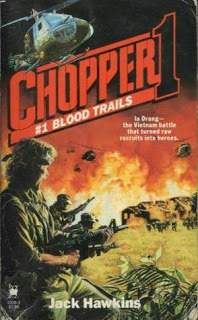 Cain apparently did his research for his Saigon Commandosseries the hard way. In the latter years of the Vietnam War, he served as a US Army military policeman in Saigon. He later continued his Army career as an MP, which included tours of duty in Thailand and South Korea. He was honorably discharge in 1975 with the rank of sergeant. A civilian again, Cain returned to his hometown in Colorado. He then began a decade long law enforcement career. He started as a state trooper and later became a police officer in suburban Thornton, Colorado.
Cain apparently did his research for his Saigon Commandosseries the hard way. In the latter years of the Vietnam War, he served as a US Army military policeman in Saigon. He later continued his Army career as an MP, which included tours of duty in Thailand and South Korea. He was honorably discharge in 1975 with the rank of sergeant. A civilian again, Cain returned to his hometown in Colorado. He then began a decade long law enforcement career. He started as a state trooper and later became a police officer in suburban Thornton, Colorado. Ten years removed from the war, Cain wrote a non-fiction manuscript entitled Saigon Alley, which was based on his experiences in Vietnam. The manuscript was rejected by numerous publishers until it came to the attention of Zebra Books editor, Michael Seidman. Once an MP himself, Seidman offered Cain a four book contract if he would fictionalize the experiences in his manuscript and increase the sex and violence—which Zebra relied on as a selling point for their books. Cain agreed, turning Saigon Alley into the basis for his fictional Saigon Commandos novels.
*Zebra editor Michael Seidman was at Tor Books when he bought and purchased my first novel, Citadel Run, and contracted me for two more.*
Starting publication in 1983, the Saigon Commandosgrew to a series of 12 books and became a cult classic. More than a standard Vietnam action series, Cain’s first-hand knowledge helped him capture the essence of being in Saigon during the height of the war.
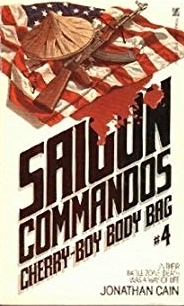 *At the end of Saigon Commandos #4: Cherry Boy Body Bag, Cain adds an unusual epilogue. His original contract from Zebra was for four books, so my guess is Cain had not received a contract for further books by the time he finished book four. Thinking this would be the last book in the series (it actually ran for eight more titles), Cain gave some closure to the series with the epilogue covering what would happen to the main characters in the future. As Cain did himself, the Saigon Commando MPs hired on with various law enforcement agencies back in the real world. One would commit suicide, another killed in in the line of duty, and one would join the anti-Communist resistance in Cambodia. The various Vietnamese policemen (who were secondary characters in the books) would disappear into reeducation camps after the Communist victory. The Leader of the Saigon Commandos, Ex-Green Beret Mark Stryker remained in Saigon continuing to resist the Communist takeover of the city he loved.*
*At the end of Saigon Commandos #4: Cherry Boy Body Bag, Cain adds an unusual epilogue. His original contract from Zebra was for four books, so my guess is Cain had not received a contract for further books by the time he finished book four. Thinking this would be the last book in the series (it actually ran for eight more titles), Cain gave some closure to the series with the epilogue covering what would happen to the main characters in the future. As Cain did himself, the Saigon Commando MPs hired on with various law enforcement agencies back in the real world. One would commit suicide, another killed in in the line of duty, and one would join the anti-Communist resistance in Cambodia. The various Vietnamese policemen (who were secondary characters in the books) would disappear into reeducation camps after the Communist victory. The Leader of the Saigon Commandos, Ex-Green Beret Mark Stryker remained in Saigon continuing to resist the Communist takeover of the city he loved.*
Being an MP in a city like Saigon demands far more than guarding installations and directing traffic. Cain crafts an exotic city full of beautiful women and nonstop excitement as his collected stories cover all aspects of an MPs duties. In doing so, he skillfully brings to life a vibrant city inhabited with colorful and dangerous characters.
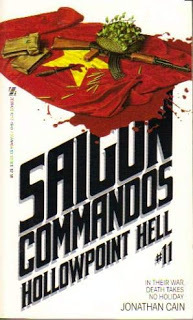 The final three books in the series, known as The Tet Trilogy, were the culmination of everything Cain had experienced as an MP and learned as a writer. The Tet Trilogy is among the best writing ever—fiction or non-fiction—about the Vietnam War.
*In his Tet trilogy, Cain uses actual transcripts of MP jeep-to-jeep radio transmissions, taken from official logs, records and archives, and incorporates them into the punchy dialogue.*
The final three books in the series, known as The Tet Trilogy, were the culmination of everything Cain had experienced as an MP and learned as a writer. The Tet Trilogy is among the best writing ever—fiction or non-fiction—about the Vietnam War.
*In his Tet trilogy, Cain uses actual transcripts of MP jeep-to-jeep radio transmissions, taken from official logs, records and archives, and incorporates them into the punchy dialogue.*
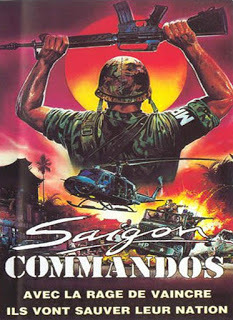 In an unlikely turn of events for any men’s adventure series, Saigon Commandos #9: Mad Minute, was not only bought by Hollywood shlockmeister Roger Corman's Concorde Studios, but actually made into the 1988 straight to video film Saigon Commandos. It was released as a feature film in foreign theaters as American Kommandos...
CLICK HERE
In an unlikely turn of events for any men’s adventure series, Saigon Commandos #9: Mad Minute, was not only bought by Hollywood shlockmeister Roger Corman's Concorde Studios, but actually made into the 1988 straight to video film Saigon Commandos. It was released as a feature film in foreign theaters as American Kommandos...
CLICK HERE
Written by Thomas McKelvey Cleaver and directed by Clark Henderson The movie was filmed in the Phillipenes on a typically miserly Corman budget. Despite this, Saigon Commandos is a decent B-action movie for those of us who get a kick out of such low-budget fare. The film starred Richard Young, who would become far better known for his role in the opening sequence of Indiana Jones and the Last Crusade a year later.
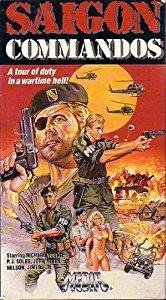 *Saigon Commandos is a surprisingly decent film, focusing not on the battles in the Vietnamese jungles, but on the corruption, heroin infested streets, hidden snipers, and hollow-point killing murders in Saigon. I was hooked from the opening scene of a Vietnamese band singing House of the Rising Sun in a strip club. I had low expectations for this film, since it rose above those expectations—however slightly—it turned out to be entertaining. If you can manage to track down a copy, I recommend it for action B-movie fans.*
*Saigon Commandos is a surprisingly decent film, focusing not on the battles in the Vietnamese jungles, but on the corruption, heroin infested streets, hidden snipers, and hollow-point killing murders in Saigon. I was hooked from the opening scene of a Vietnamese band singing House of the Rising Sun in a strip club. I had low expectations for this film, since it rose above those expectations—however slightly—it turned out to be entertaining. If you can manage to track down a copy, I recommend it for action B-movie fans.*
Cain’s writing career spanned over thirty book in various men’s adventure and military adventure paperback original series. While successful by many standards, and despite Hollywood interest leading to a produced feature film, Cain had slowly become a victim of the deadly curse of the mid-list writer—the main symptoms being the inability to breakout of the genre markets, small advances, and rarely, if ever, a royalty check large enough for a dirty weekend away.
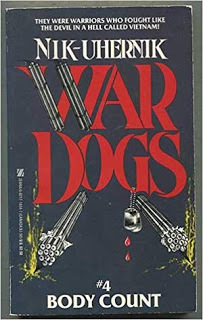 In 1990, Cain moved on to another act in his career...literally moving on...to Los Angeles, where he became a private investigator. However, he did not give up his keyboard completely, writing two investigative manuals, Trick Questions (And Other Trade Secrets of an L.A. County P.I.)and So You Wanna Be A Private Eye, as supplements to his courses on investigation taught at a local continuing education facility.
In 1990, Cain moved on to another act in his career...literally moving on...to Los Angeles, where he became a private investigator. However, he did not give up his keyboard completely, writing two investigative manuals, Trick Questions (And Other Trade Secrets of an L.A. County P.I.)and So You Wanna Be A Private Eye, as supplements to his courses on investigation taught at a local continuing education facility.The Internet turns up little information concerning Cain’s personal life, and what can be found is most often repetitive. However, I did uncovered a strange book entitled Whatnots! Thirty Fascinating People Share Their Extraordinary Collections By Eileen Birin. In it, Cain has his own chapter talking about his book collecting habits and his love for Doc Savage. Along with Doc Savage, Cain claims Arthur Conan Doyle, Jules Verne, and Joseph Wambaugh as major influences on his writing. He collects all of their books among many others.
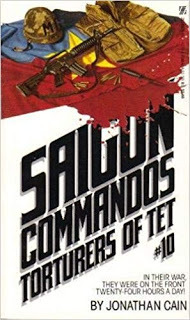
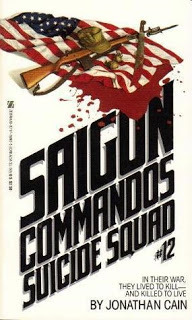 SAIGON COMMANDOS Saigon Commandos (1983) Code Zero Shots Fired (1984)Dinky Dau Death (1984)Cherry Boy Body Bag (1984)Boonie-Rat Body Burning (1984)Di Di Mau Or Die (1984)Sac Mau, Victor Charlie (1985)You Die, Du Ma! (1985)Mad Minute (1985) Torturers of Tet (1986)Hollowpoint Hell (1986)Suicide Squad (1986)
SAIGON COMMANDOS Saigon Commandos (1983) Code Zero Shots Fired (1984)Dinky Dau Death (1984)Cherry Boy Body Bag (1984)Boonie-Rat Body Burning (1984)Di Di Mau Or Die (1984)Sac Mau, Victor Charlie (1985)You Die, Du Ma! (1985)Mad Minute (1985) Torturers of Tet (1986)Hollowpoint Hell (1986)Suicide Squad (1986)
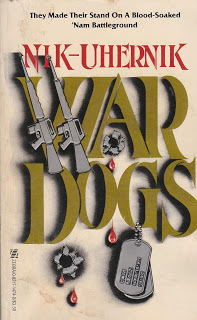
 WAR DOGS
WAR DOGSWar Dogs (1984)M-16 Jury (1985)Busting Caps (1985)Body Count (1986)
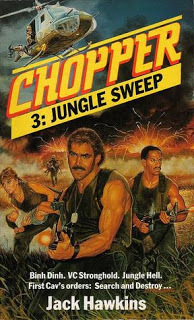
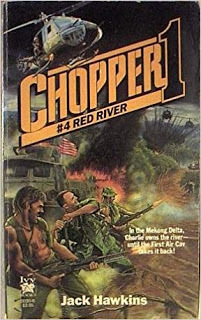 CHOPPER—1Blood Trails (1986)Tunnel Warriors (1987)Jungle Sweep (1987) Red River (1987)Renegade Mias (1987)Suicide Mission (1987)Kill Zone (1987)Death Brigade (1988)
CHOPPER—1Blood Trails (1986)Tunnel Warriors (1987)Jungle Sweep (1987) Red River (1987)Renegade Mias (1987)Suicide Mission (1987)Kill Zone (1987)Death Brigade (1988)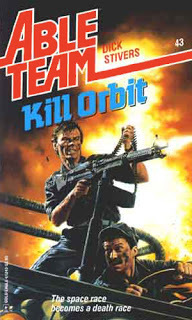
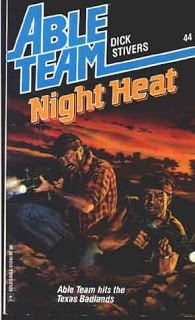 ABLE TEAM #43 Kill Orbit (1989)
ABLE TEAM #43 Kill Orbit (1989)#44 Night Heat (1989)
#46 Counterblow (1990)
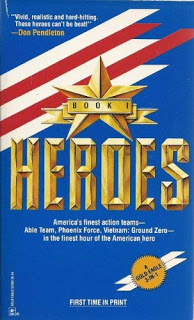 VIETNAM GROUND ZERO Zebra Cube (1992)
VIETNAM GROUND ZERO Zebra Cube (1992)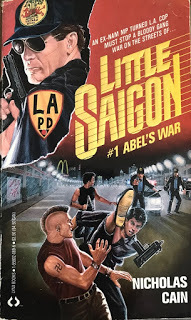
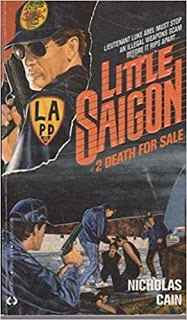 LITTLE SAIGON
LITTLE SAIGON
Abel's War
Death for Sale
Off Limits
Rough Cut
Street Tricks
White Death
Published on November 10, 2018 13:34
October 25, 2018
NEW WEST 3
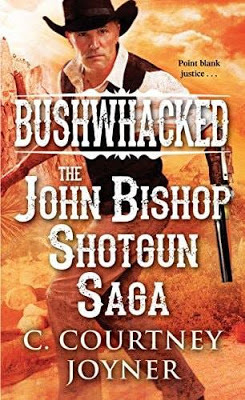 NEW WEST 3The amazing popularity of current Westerns published under the William W. Johnstone byline have kept the Western genre selling in the millions of copies. Published by Pinnacle Books, who specialize in paperback original action series, the Johnstone Westerns made it possible for other Westerns to breakout, either from Pinnacle or other publishers. Over the next few blog posts, I want to point out some of these new Western from traditional publishers, and then move on to the booming realm of independently published and small press Westerns. Featured in this post...
NEW WEST 3The amazing popularity of current Westerns published under the William W. Johnstone byline have kept the Western genre selling in the millions of copies. Published by Pinnacle Books, who specialize in paperback original action series, the Johnstone Westerns made it possible for other Westerns to breakout, either from Pinnacle or other publishers. Over the next few blog posts, I want to point out some of these new Western from traditional publishers, and then move on to the booming realm of independently published and small press Westerns. Featured in this post...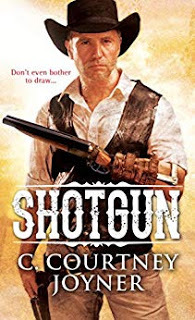 SHOTGUN #1C. COURTNEY JOYNERA double-barreled avenger is born...Dr. John Bishop thought he'd seen his share of death on the battlefields of America's great Civil War. Then his quiet life was shattered when a gang of outlaws invaded his home, killed his family, and tortured him within an inch of his life. John Bishop's soul may have died that day, but his mangled body lived on. A beautiful Cheyenne named White Fox nursed him back to health—and a gunsmith outfitted him with a special shotgun rig where his left arm used to be. A strap across one shoulder fires it, while the chip on the other fuels his quest for vengeance. Now the man called Shotgun rides deep into the Colorado winter to find and kill the men who murdered everything he once held dear. The hunt will lead him straight to the heart of a fiendish criminal conspiracy—and force him to confront the violent legacy of his own outlaw brother.
SHOTGUN #1C. COURTNEY JOYNERA double-barreled avenger is born...Dr. John Bishop thought he'd seen his share of death on the battlefields of America's great Civil War. Then his quiet life was shattered when a gang of outlaws invaded his home, killed his family, and tortured him within an inch of his life. John Bishop's soul may have died that day, but his mangled body lived on. A beautiful Cheyenne named White Fox nursed him back to health—and a gunsmith outfitted him with a special shotgun rig where his left arm used to be. A strap across one shoulder fires it, while the chip on the other fuels his quest for vengeance. Now the man called Shotgun rides deep into the Colorado winter to find and kill the men who murdered everything he once held dear. The hunt will lead him straight to the heart of a fiendish criminal conspiracy—and force him to confront the violent legacy of his own outlaw brother.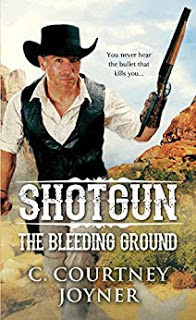 SHOTGUN #2
SHOTGUN #2THE BLEEDING GROUNDC. COURTNEY JOYNERHe lost his arm to outlaws. Replaced it with a double-barreled boom stick. Now, Civil War veteran Dr. John Bishop is armed for justice—and extremely dangerous. They call him, Shotgun...John Shotgun Bishop has tangled with plenty of lowlifes in his time—and he's got the missing limb to prove it. But few sink as low as his own brother Devlin, a crazy-mean cuss who'd steal the horns off the devil himself. This time, Dev's got his cold black heart set on taking over John Chisum's land, destroying the cattle king's dream of building a new town and laying down tracks for the railroad. So Chisum hires Shotgun and his Cheyenne partner, White Fox, to protect his investment. But when the Bishop family feud turns into an all-out turf war, Shotgun ends up on the wrong side of the law—stuck in the middle between the devil he knows and two deadly new players. Their names are Billy the Kid and Pat Garrett. And this time, there will be blood.
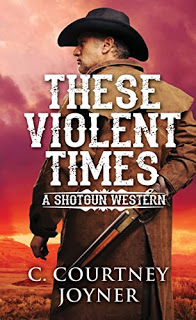 SHOTGUN #3
SHOTGUN #3THESE VIOLENT TIMESC. COURTNEY JOYNER Outlaws left him with one arm, which he replaced with a specially rigged .12 gauge shotgun. Now Dr. John Bishop has the ultimate cure for evil—one barrel at a time...Even in the darkest days of the Civil War, Dr. John Shotgun Bishop never saw anything like the deadly plague sweeping through the Cheyenne nation. Diseased corpses dumped in the wells of the Great Plains. Women and children bombarded with infected blood during midnight raids. This is the new scourge of germ warfare, and it’s threatening to wipe out thousands of innocent lives. The culprits are a gang of renegades led by Shotgun’s one-time protégé, a doctor driven insane by the war, and now hell-bent on spreading pestilence across the land to witness the cleansing of the West. When the psychopath frames Shotgun for the plague-murders, he’s forced into a bloody chase, with a posse of lawmen, deadly bounty hunters, and a Cheyenne war party on his trail. Dr. John Bishop has only one choice to stop the plague, and clear his name—load up and start shooting.
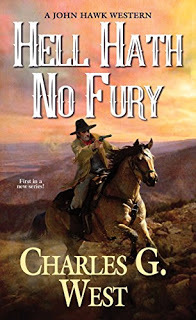 HELL HATH NO FURYCHARLES G. WESTIn the first of a trailblazing new series, acclaimed western author Charles G. West introduces the legend of a man called Hawk...To start their new life together, Jamie Pratt and his young bride join a westward wagon train bound for the Rocky Mountains. They get as far as Helena when their unscrupulous wagon master deserts them, leaving them as good as dead in a godforsaken, blood-scorched land. The other settlers agree to set stakes where they are, but Jamie and his bride press on toward the Bitterroot Valley, deep into Sioux territory, but they never come out the other side...Jamie’s brother, Monroe, enlists the legendary scout John Hawk to find them. A hardened veteran of the range, Hawk is living off the land in a little cabin on the Boulder River when Monroe comes begging for his help. To rescue Jamie and his bride, Hawk—and his guns—will soon be back in the saddle, riding fast and fierce into deadly odds. For any other man it’s a suicide mission. For Hawk, delivering justice is what he was born to do.
HELL HATH NO FURYCHARLES G. WESTIn the first of a trailblazing new series, acclaimed western author Charles G. West introduces the legend of a man called Hawk...To start their new life together, Jamie Pratt and his young bride join a westward wagon train bound for the Rocky Mountains. They get as far as Helena when their unscrupulous wagon master deserts them, leaving them as good as dead in a godforsaken, blood-scorched land. The other settlers agree to set stakes where they are, but Jamie and his bride press on toward the Bitterroot Valley, deep into Sioux territory, but they never come out the other side...Jamie’s brother, Monroe, enlists the legendary scout John Hawk to find them. A hardened veteran of the range, Hawk is living off the land in a little cabin on the Boulder River when Monroe comes begging for his help. To rescue Jamie and his bride, Hawk—and his guns—will soon be back in the saddle, riding fast and fierce into deadly odds. For any other man it’s a suicide mission. For Hawk, delivering justice is what he was born to do.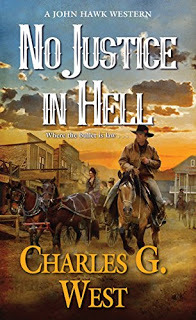 NO JUSTICE IN HELLCHARLES G. WESTFrom acclaimed storyteller Charles G. West comes a thrilling new chapter in the saga of John Hawk, an army scout with a tracker’s eye, a cowboy’s grit—and his own brand of justice...Three desperate women. One deranged killer. No way in hell is John Hawk going to sit back and let the innocent get slaughtered. He first meets the three lovely ladies as they’re fleeing in a wagon—alone—through Blackfoot country. What’s their rush? They’re being pursued by a wanted outlaw who wants them dead. Their only chance is to reach the Last Chance Saloon in Helena—and John Hawk is their last hope…Hawk can track down a low-life like nobody’s business. But this time he has to stay two steps ahead, keeping the ladies safe and sound until they get to the saloon. There’s just one problem: the outlaw got there first. He’s the notorious Zach Dubose. He’s waiting for Hawk and his girls. And he’s ordering them a round vengeance with a bullet chaser—and death on arrival.
NO JUSTICE IN HELLCHARLES G. WESTFrom acclaimed storyteller Charles G. West comes a thrilling new chapter in the saga of John Hawk, an army scout with a tracker’s eye, a cowboy’s grit—and his own brand of justice...Three desperate women. One deranged killer. No way in hell is John Hawk going to sit back and let the innocent get slaughtered. He first meets the three lovely ladies as they’re fleeing in a wagon—alone—through Blackfoot country. What’s their rush? They’re being pursued by a wanted outlaw who wants them dead. Their only chance is to reach the Last Chance Saloon in Helena—and John Hawk is their last hope…Hawk can track down a low-life like nobody’s business. But this time he has to stay two steps ahead, keeping the ladies safe and sound until they get to the saloon. There’s just one problem: the outlaw got there first. He’s the notorious Zach Dubose. He’s waiting for Hawk and his girls. And he’s ordering them a round vengeance with a bullet chaser—and death on arrival.
Published on October 25, 2018 16:36
October 13, 2018
NEW WEST 2
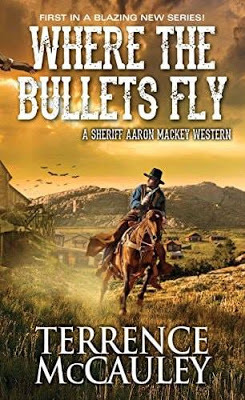 NEW WEST 2The amazing popularity of current Westerns published under the William W. Johnstone byline have kept the Western genre selling in the millions of copies. Published by Pinnacle Books, who specialize in paperback original action series, the Johnstone Westerns made it possible for other Westerns to breakout, either from Pinnacle or other publishers. Over the next few blog posts, I want to point out some of these new Western from traditional publishers, and then move on to the booming realm of independently published and small press Westerns. First up are some Westerns from writers I know and whose work I admire...
NEW WEST 2The amazing popularity of current Westerns published under the William W. Johnstone byline have kept the Western genre selling in the millions of copies. Published by Pinnacle Books, who specialize in paperback original action series, the Johnstone Westerns made it possible for other Westerns to breakout, either from Pinnacle or other publishers. Over the next few blog posts, I want to point out some of these new Western from traditional publishers, and then move on to the booming realm of independently published and small press Westerns. First up are some Westerns from writers I know and whose work I admire...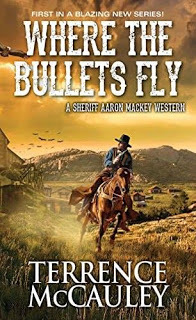 WHERE THE BULLETS FLY TERRENCE MCCAULEY Surrounded by ranches, farms, and precious metal mines, the town of Dover Station, Montana is ripe for the plucking. It’s up to Sheriff Aaron Mackey to keep the peace—and keep the dregs of humanity from trying to make a killing...Where the bullets fly, vengeance reigns—If anyone can smell an investment opportunity, it’s railroad men and big city bankers. They’re not the kind of folks that Sheriff Mackey is used to dealing with. But greed is greed, and if anyone knows how money can drive men to murder, it’s the sheriff of a boomtown like Dover Station. But when Mackey is forced to gun down a pair of saloon rats, it brings a powder keg of trouble—with a quick-burning fuse of vengeance named Alexander Duramont. This bloodthirsty psychopath wants to kill the sheriff for killing his buddies. And he plans to get his revenge using a highly combustible mix of fire, fear, and dynamite. Mackey’s not sure how he’s going to stop this blood-crazed lunatic, but it’s going to be one heck of an explosive and very violent showdown.
WHERE THE BULLETS FLY TERRENCE MCCAULEY Surrounded by ranches, farms, and precious metal mines, the town of Dover Station, Montana is ripe for the plucking. It’s up to Sheriff Aaron Mackey to keep the peace—and keep the dregs of humanity from trying to make a killing...Where the bullets fly, vengeance reigns—If anyone can smell an investment opportunity, it’s railroad men and big city bankers. They’re not the kind of folks that Sheriff Mackey is used to dealing with. But greed is greed, and if anyone knows how money can drive men to murder, it’s the sheriff of a boomtown like Dover Station. But when Mackey is forced to gun down a pair of saloon rats, it brings a powder keg of trouble—with a quick-burning fuse of vengeance named Alexander Duramont. This bloodthirsty psychopath wants to kill the sheriff for killing his buddies. And he plans to get his revenge using a highly combustible mix of fire, fear, and dynamite. Mackey’s not sure how he’s going to stop this blood-crazed lunatic, but it’s going to be one heck of an explosive and very violent showdown.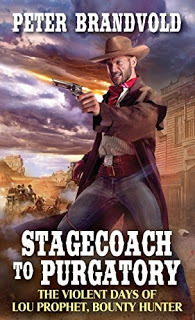 STAGECOACH TO PURGATORY
PETER BRANDVOLD These are the violent days (and reckless nights) of Lou Prophet, as told to his ink-stained confessor. Most of these recollections are brutal. Others are bloody. Some might even be true.
STAGECOACH TO PURGATORY
PETER BRANDVOLD These are the violent days (and reckless nights) of Lou Prophet, as told to his ink-stained confessor. Most of these recollections are brutal. Others are bloody. Some might even be true.LAST STAGE TO HELL: What do you get when you take one stagecoach out of Denver, add a thousand-or-so bullets whizzing past your head, while sitting next to two headless corpses caught in the crossfire? If your name is Lou Prophet, you get revenge. Raucous, rowdy, ruthless revenge. Next question?
DEVIL BY THE TAIL: How do you catch a fork-tongued demon who’s busted out of prison to wreak all sorts of unholy hell on a small Texas town? If you’re Lou Prophet, you team up with red-hot Louisa Bonaventura, aka “The Vengeance Queen,” and cut a swath of merciless Prophet mayhem in return...Due process be damned.
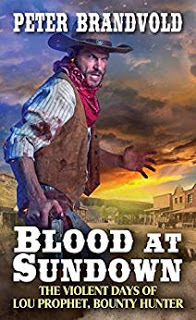 BLOOD AT SUNDOWN PETER BRANDVOLD In Lou Prophet’s lawless West, justice comes from the barrel of a gun—his gun. Peter Brandvold’s acclaimed two-fisted Westerns tell of the bloody days (and thrilling nights) of the bounty hunter called Prophet, and the dangerous woman he dared to love.
BLOOD AT SUNDOWN PETER BRANDVOLD In Lou Prophet’s lawless West, justice comes from the barrel of a gun—his gun. Peter Brandvold’s acclaimed two-fisted Westerns tell of the bloody days (and thrilling nights) of the bounty hunter called Prophet, and the dangerous woman he dared to love. BLOOD AT SUNDOWN: Lou Prophet and the deadly Louisa Bonaventure have torn a bloody swath across Dakota territory in search of the Griff Hatchley gang. When they finally catch up to them, an epic blizzard threatens to turn the Dakota prairie into a frozen hell. To bag their prey before the storm hits, Prophet and Louisa split up—and take separate paths towards damnation.
DEATH IN THE SNOW: Prophet’s course takes him into a town packed to the gills with the deadliest outlaws that roamed the frontier, while Louisa gets caught in Sundown, a one-horse town where a hatchet-wielding maniac threatens to paint Main Street red. When spring’s thaw comes, they’ll find a city of corpses beneath the snow...And nobody gives a damn about the law.
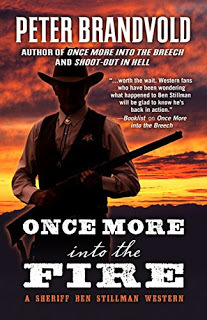 ONCE MORE INTO THE FIRE PETER BRANDVOLD In the first, full-length novel of this gritty, fast-moving western duo, Once More with a Vengeance, Sheriff Ben Stillman finds himself in the unenviable position of having to arrest a young man for murder on suspicious evidence. But the cards are stacked against the young firebrand who calls himself Johnny Nevada. One, Johnny has gotten Judge Hoagland’s daughter pregnant, shaming and enraging Hoagland himself. Two, Johnny warned Dave Bliss he was going to kill him because Bliss ordered Johnny to stay away from Bliss’s daughter, Sarah, whom the young Casanova was also sparking. Johnny made the warning public and two weeks later Bliss was dead. In the novella, Rattlesnake Convention, Ben finds himself on the trail of two young thieving killers with a hard winter storm bearing down.
ONCE MORE INTO THE FIRE PETER BRANDVOLD In the first, full-length novel of this gritty, fast-moving western duo, Once More with a Vengeance, Sheriff Ben Stillman finds himself in the unenviable position of having to arrest a young man for murder on suspicious evidence. But the cards are stacked against the young firebrand who calls himself Johnny Nevada. One, Johnny has gotten Judge Hoagland’s daughter pregnant, shaming and enraging Hoagland himself. Two, Johnny warned Dave Bliss he was going to kill him because Bliss ordered Johnny to stay away from Bliss’s daughter, Sarah, whom the young Casanova was also sparking. Johnny made the warning public and two weeks later Bliss was dead. In the novella, Rattlesnake Convention, Ben finds himself on the trail of two young thieving killers with a hard winter storm bearing down.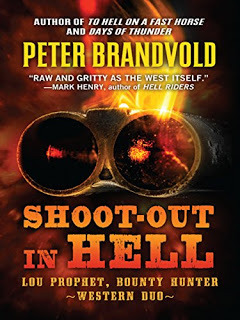 SHOOT-OUT IN HELL PETER BRANDVOLD Bounty Hunter Lou Prophet is stalking the notorious train robber Frank Beauregard, a man with as much conscience as a rattlesnake with a baby rabbit in its craw. This snake, however, has a woman in his craw—an innocent young woman who came west from Minnesota to be the mail-order bride of a lonely rancher. Miss Mattie Anderson finds her new home high in the Colorado Rockies far from what she’d expected. She finds her husband-to-be far from what she’d expected, as well. Why is his hired man so tongue-tied? Who’s the dead man in the shallow grave out back? As more dead are piled high and the lead flies like snowflakes in a prairie blizzard, Mattie begins to wonder if she hasn’t promised herself to the devil himself. Only Lou Prophet can save her from the ties that not only bind but threaten to hang her.
SHOOT-OUT IN HELL PETER BRANDVOLD Bounty Hunter Lou Prophet is stalking the notorious train robber Frank Beauregard, a man with as much conscience as a rattlesnake with a baby rabbit in its craw. This snake, however, has a woman in his craw—an innocent young woman who came west from Minnesota to be the mail-order bride of a lonely rancher. Miss Mattie Anderson finds her new home high in the Colorado Rockies far from what she’d expected. She finds her husband-to-be far from what she’d expected, as well. Why is his hired man so tongue-tied? Who’s the dead man in the shallow grave out back? As more dead are piled high and the lead flies like snowflakes in a prairie blizzard, Mattie begins to wonder if she hasn’t promised herself to the devil himself. Only Lou Prophet can save her from the ties that not only bind but threaten to hang her.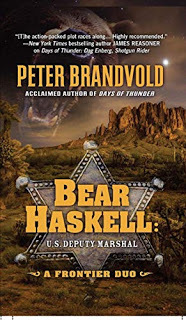 BEAR HASKELL PETER BRANDVOLD Two western novels featuring Bear Haskell, U.S. Deputy Marshal, who rides for Chief Marshal Henry Dade out of Denver’s First District Court. Haskell’s a former Union war hero and Pinkerton agent, a big man over six and a half feet tall and as broad as a barn door. He wears a necklace of bear claws taken from the grizzly that almost had him for supper. That’s the kind of man bear is. He holds a grudge and he gives no quarter—to grizzly bears or men. In these two rapid-fire westerns, Bear is given the nasty assignment of going after the man or men who backshot an old lawman friend; then, in the second book, of heading down to Texas to hunt a notorious, mysterious, and cruelly cunning killer known as The Jackal.
BEAR HASKELL PETER BRANDVOLD Two western novels featuring Bear Haskell, U.S. Deputy Marshal, who rides for Chief Marshal Henry Dade out of Denver’s First District Court. Haskell’s a former Union war hero and Pinkerton agent, a big man over six and a half feet tall and as broad as a barn door. He wears a necklace of bear claws taken from the grizzly that almost had him for supper. That’s the kind of man bear is. He holds a grudge and he gives no quarter—to grizzly bears or men. In these two rapid-fire westerns, Bear is given the nasty assignment of going after the man or men who backshot an old lawman friend; then, in the second book, of heading down to Texas to hunt a notorious, mysterious, and cruelly cunning killer known as The Jackal.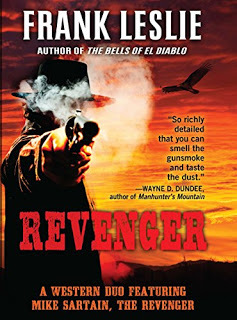 REVENGER FRANK LESLIE (AKA: PETER BRANDVOLD) From the celebrated author of the popular Yakima Henry novels, a new western adventure series. After the War Between the States, the former Confederate Mike Sartain came west and joined the frontier cavalry. Wounded by Apaches in Arizona, he was nursed back to health by an old desert rat and his beautiful granddaughter, Jewel. When the prospector and Jewel were viciously murdered by marauding Yankees, Sartain hunted the soldiers down and killed them in his own fierce Cajun style, for Jewel had been carrying Sartain’s unborn child. That’s how Mike Sartain’s lust for revenge got started. That’s how he became a wanted man, with a dead-or-alive price on his head. Now, with no choice but to keep on riding, The Revenger rides for anyone who has an ax to grind.
REVENGER FRANK LESLIE (AKA: PETER BRANDVOLD) From the celebrated author of the popular Yakima Henry novels, a new western adventure series. After the War Between the States, the former Confederate Mike Sartain came west and joined the frontier cavalry. Wounded by Apaches in Arizona, he was nursed back to health by an old desert rat and his beautiful granddaughter, Jewel. When the prospector and Jewel were viciously murdered by marauding Yankees, Sartain hunted the soldiers down and killed them in his own fierce Cajun style, for Jewel had been carrying Sartain’s unborn child. That’s how Mike Sartain’s lust for revenge got started. That’s how he became a wanted man, with a dead-or-alive price on his head. Now, with no choice but to keep on riding, The Revenger rides for anyone who has an ax to grind.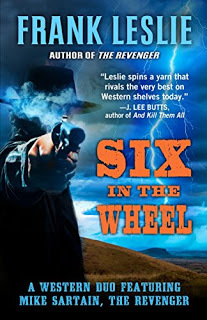 SIX IN THE WHEEL FRANK LESLIE (AKA: PETER BRANDVOLD) Saddle up and ride the hot and wild trails of the old frontier with the Revenger, Mike Sartain, as he rights wrongs for those in need. In The Bittersweet War, Sartain rides into the Big Bend country of West Texas. He’s hard on the trail to Old Mexico, for bounty hunters and lawmen are clogging up his back trail. Only, as it often does, trouble finds him in the Davis Mountains, in the little town of Bittersweet, which turns out to be appropriately named. In Gold Dust Woman, A beautiful ranch woman from Lincoln County, New Mexico, wants Sartain to kill her husband, a county sheriff under Pat Garrett. The woman thinks her husband, possessed by an evil Apache spirit, murdered their three young sons. Is Everett Chance really evil or is his wife loco?
SIX IN THE WHEEL FRANK LESLIE (AKA: PETER BRANDVOLD) Saddle up and ride the hot and wild trails of the old frontier with the Revenger, Mike Sartain, as he rights wrongs for those in need. In The Bittersweet War, Sartain rides into the Big Bend country of West Texas. He’s hard on the trail to Old Mexico, for bounty hunters and lawmen are clogging up his back trail. Only, as it often does, trouble finds him in the Davis Mountains, in the little town of Bittersweet, which turns out to be appropriately named. In Gold Dust Woman, A beautiful ranch woman from Lincoln County, New Mexico, wants Sartain to kill her husband, a county sheriff under Pat Garrett. The woman thinks her husband, possessed by an evil Apache spirit, murdered their three young sons. Is Everett Chance really evil or is his wife loco? 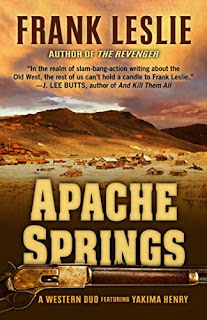 APACHE SPRINGS FRANK LESLIE (AKA: PETER BRANDVOLD) In this western duo, the half-breed wanderer, Yakima Henry, pins a badge on his shirt...In Bloody Arizona, four strangers ride into Apache Springs and shoot the marshal while Yakima is locked up. Now the marshal’s wife Julia convinces Yakima to wear her husband’s badge and take on the kill-crazy, vengeance-hungry Rebel Wilkes, who wants to destroy the town as well as his former lover, Julia. In Wildcat of the Sierra Estrada, Apache Springs is flourishing after gold was discovered in the surrounding mountains. With wealth comes trouble, and Yakima is about to have his fill, not the least of which is a canyon filled with lost Jesuit gold that fortune-hunters are willing to kill for, and the love triangle he becomes involved in with Julia and her sister, Emma.
APACHE SPRINGS FRANK LESLIE (AKA: PETER BRANDVOLD) In this western duo, the half-breed wanderer, Yakima Henry, pins a badge on his shirt...In Bloody Arizona, four strangers ride into Apache Springs and shoot the marshal while Yakima is locked up. Now the marshal’s wife Julia convinces Yakima to wear her husband’s badge and take on the kill-crazy, vengeance-hungry Rebel Wilkes, who wants to destroy the town as well as his former lover, Julia. In Wildcat of the Sierra Estrada, Apache Springs is flourishing after gold was discovered in the surrounding mountains. With wealth comes trouble, and Yakima is about to have his fill, not the least of which is a canyon filled with lost Jesuit gold that fortune-hunters are willing to kill for, and the love triangle he becomes involved in with Julia and her sister, Emma.
Published on October 13, 2018 20:49
NEW WEST
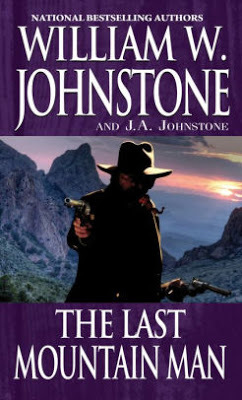 NEW WEST Debuting as an imprint of Kensington Books in 1975, Pinnacle became a hugely successful publisher of paperback original action-adventure series typified by their vanguards, The Executioner series created by Don Pendleton, and The Destroyer series created by Warren Murphy and Richard Sapir. Pinnacle displayed long-term market savvy, either by setting genre trends, or quickly responding to popular output from other publishers by creating similar series of their own—which were usually a cut above the originals.
NEW WEST Debuting as an imprint of Kensington Books in 1975, Pinnacle became a hugely successful publisher of paperback original action-adventure series typified by their vanguards, The Executioner series created by Don Pendleton, and The Destroyer series created by Warren Murphy and Richard Sapir. Pinnacle displayed long-term market savvy, either by setting genre trends, or quickly responding to popular output from other publishers by creating similar series of their own—which were usually a cut above the originals. 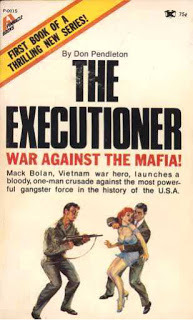
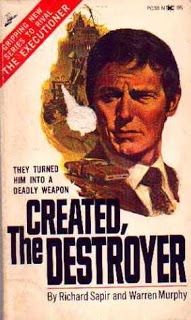 Pinnacle blazed the men’s action adventure genre trail, quickly responding to reader preferences and adjusting their output. One of their most prolific and genre hopping authors, William W. Johnstone, sold more than 30 million copies of his novels. His output included the long-running post-apocalyptic Ashes series, the equally long-running The Last Mountain Man series, and right-wing fantasy and government conspiracy theory novels. Johnstone and Pinnacle understood audience and brilliantly tailored the books to their working-class tastes.
Pinnacle blazed the men’s action adventure genre trail, quickly responding to reader preferences and adjusting their output. One of their most prolific and genre hopping authors, William W. Johnstone, sold more than 30 million copies of his novels. His output included the long-running post-apocalyptic Ashes series, the equally long-running The Last Mountain Man series, and right-wing fantasy and government conspiracy theory novels. Johnstone and Pinnacle understood audience and brilliantly tailored the books to their working-class tastes.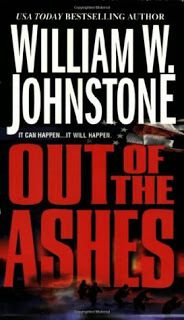
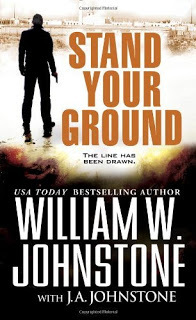 Despite Johnstone passing away in 2004, Pinnacle has managed to continue the Johnstone Brand and has turned it into a Western genre juggernaut. According to an article in Publisher’s Weekly, 2017 was the Johnstone brand's best year ever, with 18 novels making the Publishers Weekly bestseller list, and 15 titles charting on the USA Today book listings for a combined total of 27 weeks. Currently, approximately three-quarters of all westerns sold in any given week are Johnstone books.
Despite Johnstone passing away in 2004, Pinnacle has managed to continue the Johnstone Brand and has turned it into a Western genre juggernaut. According to an article in Publisher’s Weekly, 2017 was the Johnstone brand's best year ever, with 18 novels making the Publishers Weekly bestseller list, and 15 titles charting on the USA Today book listings for a combined total of 27 weeks. Currently, approximately three-quarters of all westerns sold in any given week are Johnstone books.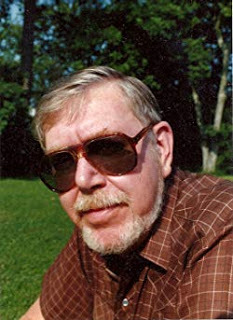 Pinnacle handled Johnstone’s death in an interesting manner. The fact Johnstone had passed away remained officially unconfirmed for nearly three years. All books published during this time period were all attributed to Johnstone on the covers and via the copyright page. Debates raged in the fan forums until the 2006 paperback release of Last Gunfighter: Devil's Legion. On the copyright page, in small type, Pinnacle confirmed William W. Johnstone diedand that a carefully selected authorhas been chosen to carry on his legacy.
Pinnacle handled Johnstone’s death in an interesting manner. The fact Johnstone had passed away remained officially unconfirmed for nearly three years. All books published during this time period were all attributed to Johnstone on the covers and via the copyright page. Debates raged in the fan forums until the 2006 paperback release of Last Gunfighter: Devil's Legion. On the copyright page, in small type, Pinnacle confirmed William W. Johnstone diedand that a carefully selected authorhas been chosen to carry on his legacy. 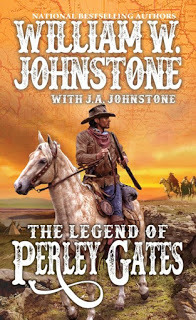 The name of Johnstone’s niece, J.A. Johnstone, began to appear on the covers under the more prominent William W. Johnstone byline. The fiction has been maintained that J.A. Johnstone is continuing all of her uncle's Western series, while also spinning off new series based on outlines and partial manuscripts left behind by Johnstone himself—to the tune of 25 new books a year. That’s a hell of an output for a single writer.
The name of Johnstone’s niece, J.A. Johnstone, began to appear on the covers under the more prominent William W. Johnstone byline. The fiction has been maintained that J.A. Johnstone is continuing all of her uncle's Western series, while also spinning off new series based on outlines and partial manuscripts left behind by Johnstone himself—to the tune of 25 new books a year. That’s a hell of an output for a single writer.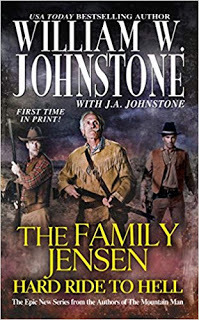 Despite the legion of Johnstone fans who eagerly gobble up every book while being happy to believe Johnstone is writing from beyond the grave or J.A. herself is handling all the chores. However, it’s common sense a number of writers sworn to secrecy via non-disclosure agreements, have been chosen by Pinnacle or Johnstone’s management team and turned into a Western fiction factory.
Despite the legion of Johnstone fans who eagerly gobble up every book while being happy to believe Johnstone is writing from beyond the grave or J.A. herself is handling all the chores. However, it’s common sense a number of writers sworn to secrecy via non-disclosure agreements, have been chosen by Pinnacle or Johnstone’s management team and turned into a Western fiction factory.Knowing they are onto a good thing, Pinnacle has published a number of other Westerns, packaged to match the Johnstone Westerns. Theory has it these short run series maybe tryouts for writers who may eventually be invited to step behind the veil and pseudonymously pick up the writing chores of a current Johnstone series, or perhaps be given a new Johnstone series to start.
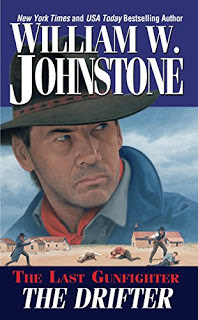 If this is true or not doesn’t matter. Westerns published under the Johnstone Brand have kept the Western genre viable in the modern market. Johnstone’s Westerns have made it possible for a number of other Westerns to breakout, either from Pinnacle or other publishers. Over the next few blog posts, I want to point out some of these new Westerns from traditional publishers, and then move on to the booming realm of independently published and small press Westerns.
If this is true or not doesn’t matter. Westerns published under the Johnstone Brand have kept the Western genre viable in the modern market. Johnstone’s Westerns have made it possible for a number of other Westerns to breakout, either from Pinnacle or other publishers. Over the next few blog posts, I want to point out some of these new Westerns from traditional publishers, and then move on to the booming realm of independently published and small press Westerns.To be continued...
Published on October 13, 2018 20:35
October 2, 2018
WESTERN COMICS—THE BRAVADOS #1
Published on October 02, 2018 14:25
WESTERN COMICS—THE BRAVADOS #2
Published on October 02, 2018 14:23
WESTERN COMICS—THE BRAVADOS #3
Published on October 02, 2018 08:46




































